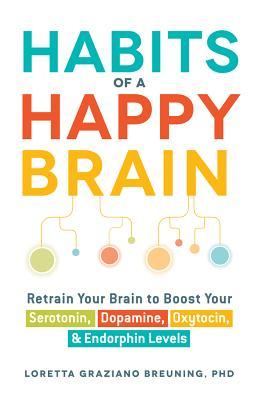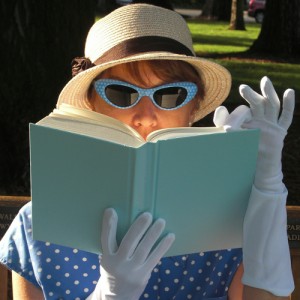
At the NCIBA’s annual book fair (that’s the Northern California Independent Booksellers Association), in a talk with Augusten Burroughs, author of the forthcoming Lust & Wonder, somebody raised their hand and said, “You probably get tired of being asked: ‘How do you write?’ So can you give us some do’s and dont’s about writing?”
Now, I wasn’t there, so I don’t know Augusten’s reply. But on the second day of the conference, the day the sales floor was open and overflowing with free ARCs (advanced reader’s copies, full of misspellings that the perfectionist wouldn’t touch with gloved hands, but I would, eagerly, with bare hands, filling four bags with freebies from the publishers), the day the tables were stocked with free miniature Snickers and Milky Ways and Reese’s Peanut Butter Cups to lure us road-weary (those who travel from afar) but vibrating-with-eagerness booksellers and book bloggers to discover all that is new in the publishing world—it was on the second day, in the car on the way, that my friend told me about the Burroughs talk, and the question that was almost asked.
My friend had her own answer:
“Would anyone ask Venus Williams, ‘How do you play tennis?’ Writing is no different than tennis playing. You just practice every day. You hit the ball.”
To which I responded, “true, but…” and began jotting notes for this blog post.
Here, then, are my thoughts to the question: “How do you write?” Even though no one raised their hand to ask.
1. You show up
Even if you only have fifteen minutes to write, you guard it like a frothing rabid dog with long yellow teeth. You hang the imaginary sign in your brain: This is sacred territory, do not tread upon it. You clear your desktop and open your laptop—the Porsche of laptops, you’re ultra-slim shiny silver MacBook Air 13—roll your chair close, set your white plastic timer for fifteen minutes, (hell, you’ve wasted three just getting into position), and you’re off.
2. You practice
You practice consonant by consonant, vowel by vowel, word by word, sentence by sentence, letting each letter form a word, and each word form a sentence. And after many sessions of showing up, some of these sentences begin to sing and shimmer on the page. Smack! You’ve finally hit the ball. And you hit it again to see where it lands, and eventually a character appears, a 1940s detective in a trench coat dashing down the marble stairs of the police building, rat-a-tat-tat, and he’s a cliche, but that’s okay, you’re practicing, remember? You’re hitting the ball. So you practice hitting that writing ball, and you get damn good at it, and then what?
3. You build a story
How? Well, that’s where craft comes in. You study the works of other writers. You read books on how to plot and how to begin and how to end and how to slog through middles, and you read books on character development and dialogue. Or maybe you study movies to see how story unfolds. Or you take classes, or work with a mentor, or just read piles of great literature and lousy literature and you absorb the nuances.
Venus Williams is an expert at sending a ball over a net. But to do so, she learned the mechanics of tennis: the serves, the overhand, the backhand, and so forth. She learned to sprint and pivot and where to aim and how to anticipate a shot.
Writers need to learn the mechanics of story. Whether you write fiction or memoir or newspaper copy or advertisements, story is in there, somewhere. So you study it, and practice writing it, and the more you practice the better you get. But while you’re practicing, you need to do one more thing.
4. You trust
Musicians have their sheet music to follow, or melody to improvise. Dancers have their music to inspire their movements. Artists have their landscapes or human models or bowls of apples to paint. What do writers have?
A blank page.
Gulp.
That’s scary.
Oh, you might have an idea, maybe a solid outline of ideas, but when all is said and done, when the butt is in the chair and the practice of spilling words on page is firmly in place and the knowledge of craft is entrenched in your synapses, all that’s left to do is trust that something good will come.
That’s the secret of writing. Trust.
As you write, maybe you don’t know what the next word will be but you trust that it will come, and it does, and then the one after that, and eventually the brain lights up, it gets that you’re writing, and it spins a story because the brain can’t not spin stories, it spins stories about everything.
As you write, you trust that you will find a direction, that you will be led from beginning to end through a long desert of a middle.
And when you’ve reached the end, you trust that you’ll have the clarity to see where the story sags, where the holes are, where it veers off course, and where it could have gone deeper.
Trust is something you learn.
But you can’t build trust until you’ve shown up consistently and practiced your technique. Which is a lot like tennis, as my friend pointed out.
Takeaways this week:
Here are my top three books for writers that I picked up at the NCIBA. Be on the lookout of them!
The Great Spring: Writing, Zen, and This Zigzag Life, by Natalie Goldberg. A collection of essays that embrace the ups, downs, wanderings, fears, and discoveries of a writing life, from Goldberg’s three decades in the trenches. Shambhala Publications, Feb.2, 2016.
The Art of X-Ray Reading: How the Secrets of 25 Great Works of Literature Will Improve Your Writing, by Roy Peter Clark. Learn to penetrate a text to see how meaning is actually made. The book features an in-depth analysis of techniques from works by Hemingway, Plath, Steinbeck, Didion, and more. Little, Brown and Company, Jan. 26, 2016
Writing Across the Landscape: Travel Journals 1960-2013, by Lawrence Ferlinghetti. Poet, painter, publisher, political activist and owner of San Francisco’s City Lights bookstore, Ferlinghetti wrote private journals on his travels across the twentieth century. A lush volume of prose, poems, drawings, wild adventures, and accounts of the people he knew (remember the Beats?) and the places he visited. Liveright, Sept. 7, 2015



